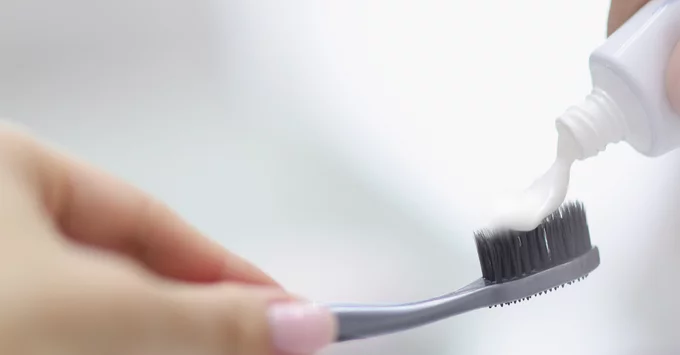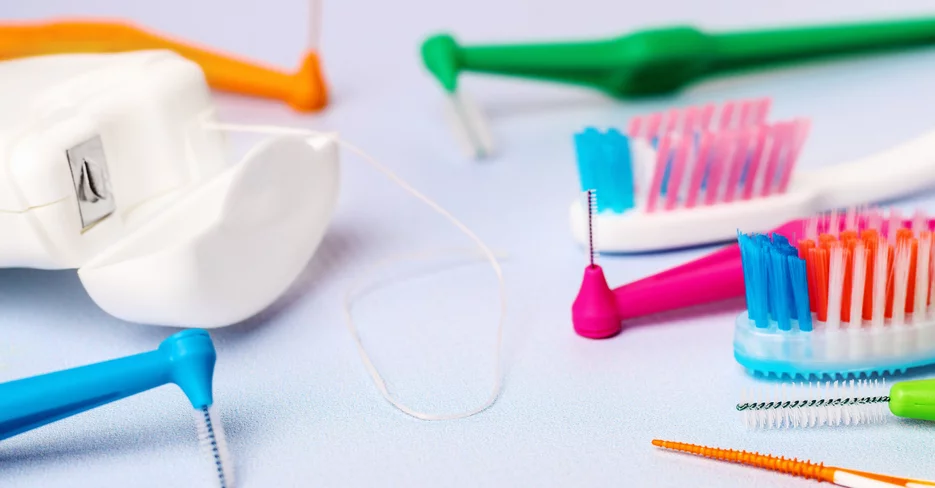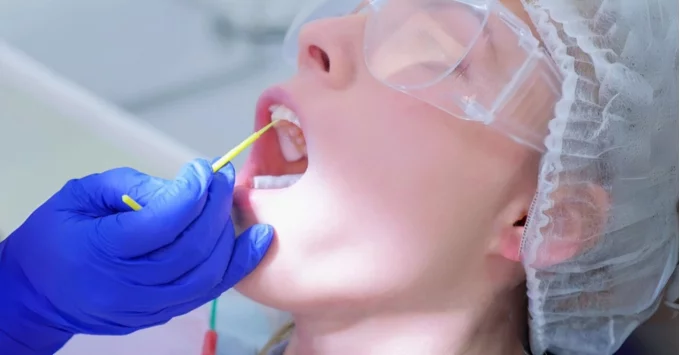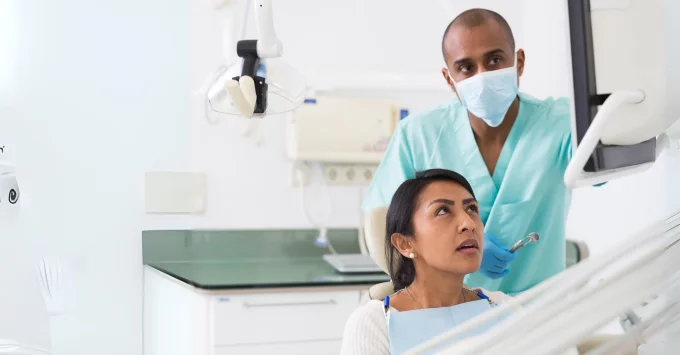By Gina Castiblanco, D.D.S, M.Sc., Ph.D.
October 30, 2025
Regular toothbrushing with fluoridated toothpastes remains the most effective strategy for preventing and controlling dental caries.1 With a vast array of fluoridated toothpastes on the market, patients frequently seek guidance from dental professionals on which product to choose.
What’s in a fluoridated toothpaste?
Fluoridated toothpastes contain both active (therapeutic) and inactive ingredients. Inactive ingredients typically include detergents, humectants, flavoring agents, sweeteners, colorants, preservatives, and other excipients.2 The primary therapeutic ingredient in over-the-counter (OTC) fluoride-containing toothpaste is a fluoride ion complexed with another compound, generally as a salt. The U.S. Food and Drug Administration (FDA) has approved only three fluoride salts for use in toothpaste: sodium fluoride, sodium monofluorophosphate, and stannous fluoride, in concentrations that should not exceed 1500 ppm.3 Once in the oral cavity, the fluoride ion is released from the salt and becomes bioavailable to interact with dental surfaces during acid challenges.
Testing and regulatory standards
According to FDA standards, toothpastes without fluoride compounds are classified as cosmetics and do not  undergo regular testing. In contrast, fluoride-containing formulas are regulated by the FDA as OTC drugs.3 Manufacturers must meet minimum standards and follow specific laboratory testing procedures to ensure the fluoride is potentially bioavailable to interact effectively with dental surfaces, rather than being bound to other components, an issue observed in earlier toothpaste versions. Additionally, manufacturers may voluntarily submit their products to receive the American Dental Association (ADA) Seal of Acceptance, which adds an extra layer of testing and scientific scrutiny on requirements for safety and efficacy.4
undergo regular testing. In contrast, fluoride-containing formulas are regulated by the FDA as OTC drugs.3 Manufacturers must meet minimum standards and follow specific laboratory testing procedures to ensure the fluoride is potentially bioavailable to interact effectively with dental surfaces, rather than being bound to other components, an issue observed in earlier toothpaste versions. Additionally, manufacturers may voluntarily submit their products to receive the American Dental Association (ADA) Seal of Acceptance, which adds an extra layer of testing and scientific scrutiny on requirements for safety and efficacy.4
Considerations for additional claims
When considering fluoridated toothpastes that advertise additional benefits (e.g., whitening, stain removal, plaque reduction, etc.) it is important to keep in mind that laboratory tests to support these additional claims are not required for their market release. FDA approval of a fluoride-containing formulation only guarantees that the individual ingredients do not interfere with the release of fluoride ions. Clinical evidence from randomized trials is necessary to validate claims of other potential benefits.
individual ingredients do not interfere with the release of fluoride ions. Clinical evidence from randomized trials is necessary to validate claims of other potential benefits.
Consider two hypothetical fluoridated toothpastes available in the market, both were FDA approved and have the ADA’s seal of acceptance. Product A, containing 1500 ppm sodium fluoride, claims an anticaries effect, with a 3-oz tube priced at $2. In contrast, Product B, which contains the same fluoride salt and concentration, claims both anticaries and whitening effects, with a 3-oz tube priced at $8. Both products meet FDA and ADA standards, ensuring that the fluoride within them has the potential to become bioavailable and able to reach the dental surface to exert its anticaries effect. However, Product B’s claim regarding its whitening effect is not subject to regulatory scrutiny. If patients and professionals are primarily interested in caries prevention, Product A is the most cost-effective option, offering a comparable potential anticaries effect at one-fourth the price.
For some patients, understanding that a $2 product can provide a similar anticaries effect as an $8 product may help build trust in their oral healthcare professional. Others may value receiving balanced information but still choose the higher-priced option if it aligns with their preferences and perceived value.
The bottom line
When advising patients on fluoridated toothpastes for caries prevention, considerations include cost-effectiveness and personal preferences. The FDA and/or ADA’s Seal of Acceptance provides confidence that even the simplest FDA-approved OTC fluoridated toothpastes deliver the minimum amount of fluoride required for effective caries control and prevention.
____________________________________
References
1. Therese Walsh et al., “Fluoride toothpastes of different concentrations for preventing dental caries,” Cochrane Database of Systematic Reviews, no. 3 (March 4, 2019): CD007868, https://doi.org/10.1002/14651858.CD007868.pub3.
2. Frank Lippert, “An introduction to toothpaste – its purpose, history and ingredients,” Monographs in Oral Science 23 (2013): 1-14.
3. U.S. Food and Drug Administration, “Over-the-Counter (OTC) Monograph M021: Anticaries Drug Products for Over-the-Counter Human Use,” posted May 2, 2023, accessed April 18, 2025, https://www.accessdata.fda.gov/drugsatfda_docs/omuf/monographs/OTC%20Monograph%20M021-Anticaries%20Drug%20Products%20for%20OTC%20Human%20Use%2005.02.2023.pdf.
4. American Dental Association, “Toothpastes,” accessed April 18, 2025. https://www.ada.org/resources/research/science-and-research-institute/oral-health-topics/toothpastes.
____________________________________
 Gina Castiblanco, DDS, MSc, PhD, is a researcher turned continuing education (CE) writer and scientific consultant with a strong commitment to evidence-based clinical practice and a passion for science communication. With 14 years of experience as a scientist and academic, she has witnessed firsthand the gap between scientific advancements and everyday clinical care. Her mission is to bridge that gap through high-quality CE that empowers health professionals and improves patient outcomes. Gina is the founder of Integrity Medical & Scientific Writing LLC, where she creates scientifically accurate CE and content that promotes critical thinking and supports integrity in healthcare.
Gina Castiblanco, DDS, MSc, PhD, is a researcher turned continuing education (CE) writer and scientific consultant with a strong commitment to evidence-based clinical practice and a passion for science communication. With 14 years of experience as a scientist and academic, she has witnessed firsthand the gap between scientific advancements and everyday clinical care. Her mission is to bridge that gap through high-quality CE that empowers health professionals and improves patient outcomes. Gina is the founder of Integrity Medical & Scientific Writing LLC, where she creates scientifically accurate CE and content that promotes critical thinking and supports integrity in healthcare.



